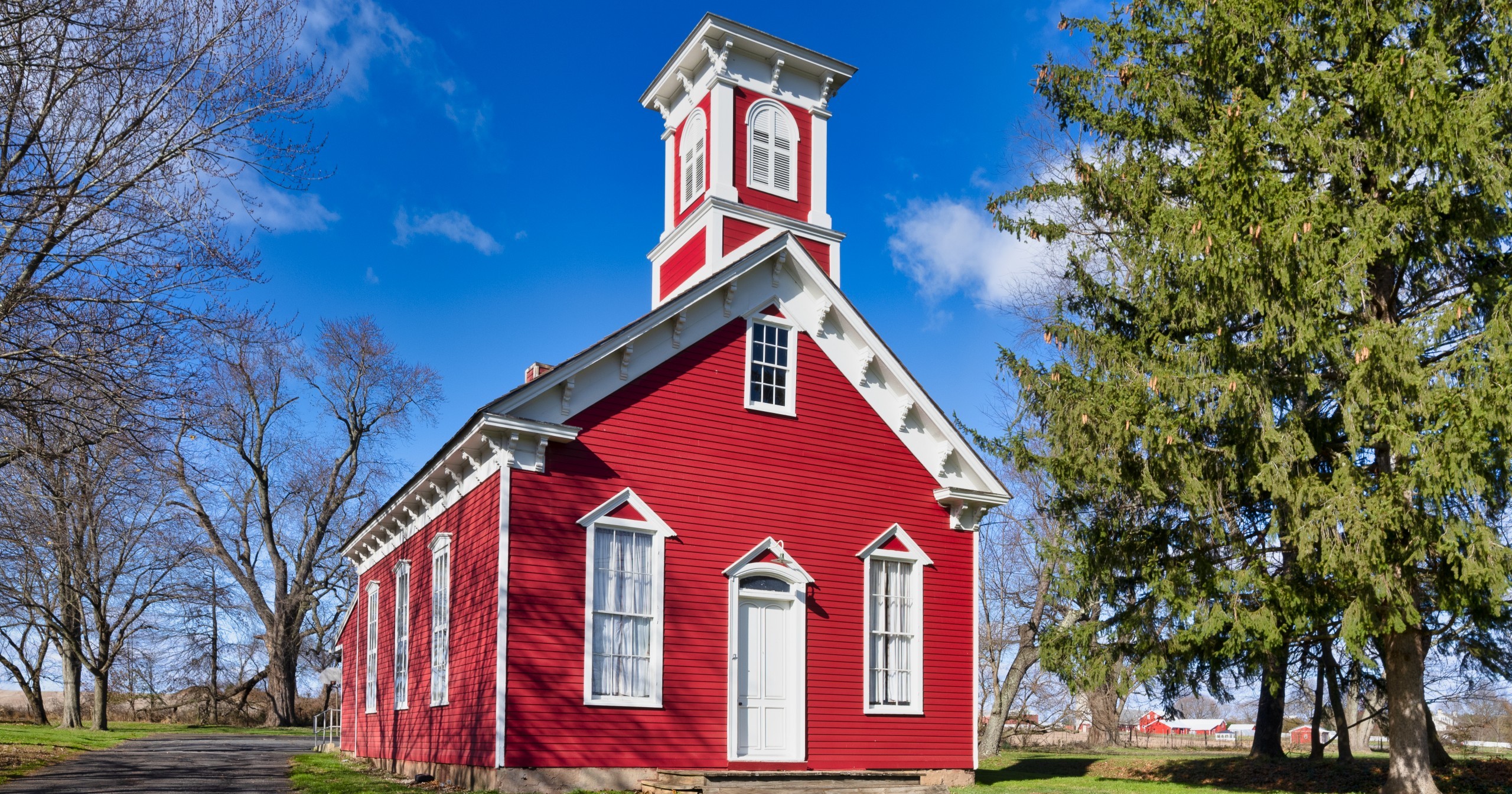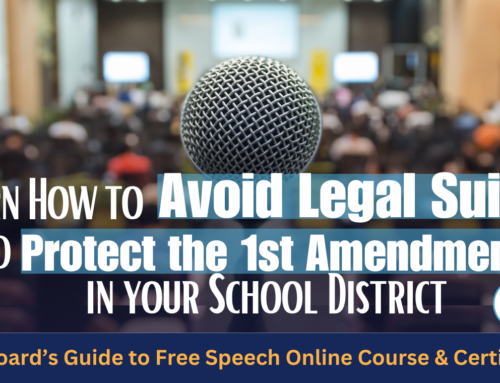
“Every child in America should be acquainted with his own country. He should read books that furnish him with ideas that will be useful to him in life and practice. As soon as he opens his lips, he should rehearse the history of his own country.”
– Noah Webster –
We’ve come a long way in American education since our country’s beginning. Leaders have gone before us to improve the quality of education throughout the centuries. Today, parents, teachers, and legislators continue the difficult, but rewarding work of giving children the educational opportunities they need. But what was the vision for schools at our nation’s founding?
Let’s take a look at how has education changed over the years.
The 1600s
- In 1635, the Boston Latin School became the first school to open in the thirteen colonies. It is also considered to be the nation’s oldest public school, according to American Board.
- Public schools in the United States initially focused on values like family, religion, and community. There was not as much of an emphasis on academics like math or reading. At the time, girls were typically taught how to read, but not to write.
- Harvard was the first school for higher education. It was founded in 1636. AllAboutHistory.org shares that the Puritans settled and planned to train people up to spread the gospel. Harvard’s mission was to do just that.
- Public schools were not prevalent in the South during the 1600s and the early 1700s. Children were educated if their families could afford private tutors.
- Public School Review notes that public schools continued to grow across the country. Yet, there was no real system for guidance.
The 1700s
- After the Revolutionary War, Thomas Jefferson believed there should be an education system. He envisioned that it would be supported by taxpayer dollars. However, the government did not enact a formal system of education for nearly a century after his proposal.
- In the 18th century, Common Schools were instituted. Schools like these had one teacher who educated students of all ages in one room. Parents had to pay for their children to attend. If they could not pay tuition directly, sometimes they provided housing for the teacher or gave other materials as an exchange.
- The American Spelling Book by Noah Webster was a major development in education. It set spelling and grammatical standards for the English language in America. Known as “Blue-Backed Speller,” it was first published in 1783.
The 1800s
- By the mid-19th century, academics became the focus of public schools.
- Noah Webster made another contribution with his American Dictionary of the English Language. It heavily influenced America’s dialect and was originally published in 1828.
- Schools made progress in creating a formalized system. Massachusetts was the first state to create a Board of Education in 1837. The state had already established free public schools for every grade. This education structure was started by Horace Mann, a state legislator.
- Horace Mann believed education could bridge all kinds of societal and economic gaps. He thought free schools should be available for every citizen because education could provide wealth and opportunities. In his time with the Massachusetts Board of Education, he worked to extend the school year to six months. He also tried to give increased pay to teachers and provide better resources in the classroom.
- Noah Webster published the second volume of his American Dictionary of the English Language in 1840, as Britannica notes.
- As the 1800s wore on, government officials set more expectations for education. Henry Barnard, a Yale graduate, became the secretary of the Board of Commissioners of the Common Schools for Connecticut. Barnard worked to ensure that schools met certain guidelines.
- After the American Civil War, during the Reconstruction Era, public schooling became common in the South.
- In 1867, the federal Department of Education was founded. It helped establish a national standard for education.
The 1900s
- By 1900, school attendance was mandatory for students aged 8-14 in 31 states. In 1918, all states required students to complete elementary school.
- Education took a new turn with John Dewey’s idea of progressive education, which encouraged children to advocate for and engage in a democratic society. Under Dewey’s theory, children would be educated to reach their full potential. The idea started in the late 1800s and grew rampant in the 1930s.
- Social issues that had been developing since the Civil War began to redefine who was allowed to benefit from public education. Yet, despite the 1954 Brown vs. Board of Education Supreme Court ruling, the United States had racially-segregated schools through the 1960s. In the 1970s, the United States eradicated segregated schooling.
- Scholars began to reexamine the government’s role in education. In 1955, Milton Friedman wrote “The Role of Government in Education,” as The Heritage Foundation writes. Friedman believed in school choice, competition, and consumer freedom—all ideas that are based on free-market principles.
- Lawmakers enacted new legislation to assist students. In 1965, Title I of the Elementary and Secondary Education Act gave additional funding to local schools educating socioeconomically-limited children. That same year, low- to middle-income students became eligible for federal aid beyond high school through the Higher Education Act.
- The Migrant Education Program was established in 1966 to meet the educational and social needs of migrant children, as shared by the Monterey County Office of Education.
- Between the 1960s and the 1970s, legislators passed various acts to prohibit discrimination against gender, race, and disabilities in public schools. These include the Title VI of the Civil Rights Act, Title IX of the Education Amendments Act, and Section 504 of the Rehabilitation Act.
- In 1972, the Indian Education Act was introduced. The act authorized many grants and a formula program for Indian children and adults. It also established the Office of Indian Education and the National Advisory Council on Indian Education.
- In 1975, The Education for All Handicapped Children Act was established. It requires public schools to facilitate suitable and free education for students with disabilities.
- In the 1980s, school choice became an option as public charter schools started to grow. The first one was established in Minnesota.
- States also began making legal provisions for homeschooling around this time. While early Americans traditionally schooled their children at home, homeschooling had faded from existence for a hundred years or so due to public school attendance laws, says The Conversation.
- In 1989, State Assemblywoman Polly Williams authored the Milwaukee Parental Choice Program in Wisconsin. This was the first modern-day private school choice legislation.
2000-Present
- Expectations continue to change for education. In 2001, President George W. Bush reauthorized The Elementary and Secondary Education Act. It was renamed No Child Left Behind, bringing in standards-based testing reforms and penalities for schools that fail to meet adequate yearly progress goals.
- School choice programs became more prevalent. In 2011, 12 states passed legislation that either created school choice programs or expanded already-existing ones.
- President Obama reauthorized the Elementary and Secondary Education Act in 2015 as the Every Student Succeeds Act, which provides many measures of assessments for student achievement.
- The National Review shares how President Trump worked to expand school choice through initiatives such as the Educational Freedom Scholarships.
- Presently, the Biden Administration is working to create education programs that would signify the most federal involvement in almost half a century, reports The Washington Post. His plan involves 17 years of school attendance instead of the traditional 13-year method. Under this proposed plan, pre-kindergarten would be available for three-year-old children, and the first two years of community college would be free. At this date, the Biden Administration has already invested hundreds of billions of taxpayer dollars into the education system.
That was quite a ride! Now that you know about education’s history, do you want to make an impact in its future?
Here at NWEF, we work to give you the resources to do just that! Whether’s it’s learning how to hold your school board accountable or discovering what’s being taught in your child’s classroom, we’re here to help. It’s up to us to make positive changes!
Join the conversation today.





[…] education choice is rapidly growing in popularity and diversity. Since the resurgence of homeschooling in the 1980s, some families are in their third generation of educating at home! With such normalization comes […]
[…] reinforcement sprinkled throughout their regular school work. For instance, the McGuffy Readers, a staple of American education for over a century, were filled with moral ideals and principles of good […]
[…] far as education in America goes, charter schools are a relatively new kid on the block that seek to fill a gap in school choice. […]
[…] (To read more about how education in America has evolved, read our “America’s Education Timeline.”) […]